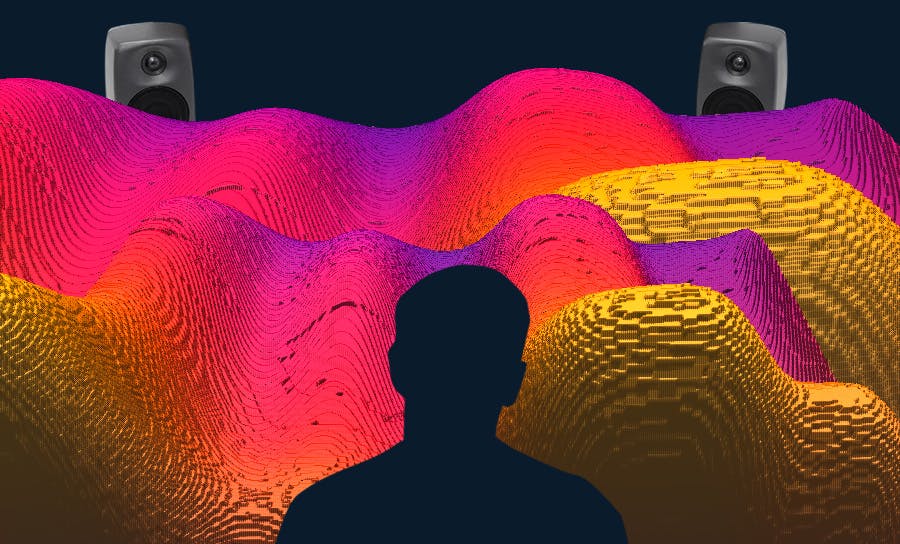Mastering EQ: Frequency Balance in Mastering Explained
Mastering EQ is one of the most important tools in a pro mastering chain.
It’s an essential processor for shaping the frequency balance of a mastered track.
But what really is mastering EQ? What makes it different from traditional mixing EQ? What mastering EQ plugins should you consider for your song?
In this article I’ll unpack the basics and explain everything you need to know about mastering EQ.
Let’s get started.
What is mastering EQ?
Mastering EQ is equalization hardware or software built specifically for mastering applications.
Like other mastering processors, mastering EQ needs to be capable of tremendous detail and transparency since it acts on an entire mix.
Not only that, mastering EQ is often used to be able to make smaller, more surgical adjustments than traditional mixing equalizers.
This means that many mastering EQs offer a smaller range of boost or cut along with stepped or detented parameters that can be easily reset to exact values.
Furthermore, mastering EQ sometimes deals with frequencies at the extreme edges of the spectrum.
It’s not uncommon to see shelving or filtering bands at frequencies higher than 20 kHz or lower than 20 Hz on hardware mastering equalizers.
While these frequencies are outside of the general range of human hearing, it may serve a purpose during mastering to boost or attenuate at these extremes.
New to mastering?
Learn the basics with these guides?
How is EQ used during mastering?
Mastering EQ is used to correct issues in the frequency content of a mix and adjust its tonal qualities for balance and musicality.
Since this process affects the entire stereo track, applying equalization at this step produces some unique results compared to individual tracks during the mix.
For example, it’s common for mastering engineers to set a high pass filter for the entire mix to make sure its low end doesn’t exceed the capabilities of a listener’s playback system.
But beyond that, mastering EQ is often used to shape the upper frequencies. This is important to create a sense of air and extension in the mix.
It may also be used to control the response of other processors down the line such as mastering compression or limiting.
Finally, general frequency content issues may be addressed with mastering EQ to help achieve a more balanced tonal character overall.
This may include subtle cuts at frequencies in the low or high midrange to reduce muddiness or harshness in the mix.
Mastering EQ is often used in this way to help address common issues in DIY mixes that arise from working in rooms that lack acoustic treatment.
Mastering EQ plugins
Professional mastering studios usually have racks of priceless analog outboard gear to use for EQ.
But there are plenty of capable plugin options for DAW-based mastering. Here are a few notable titles.
1. LANDR Mastering Plugin
LANDR’s advanced AI is now available in a mastering plugin for the first time ever.
Designed as complete professional mastering chain for your DAW, the plugin features a powerful EQ section with simple controls for managing key frequency ranges.
2. UAD Manley Massive Passive MST
The Manley Massive Passive is a legendary tube-powered passive equalizer that’s become a favorite among mastering engineers.
The MST edition features a smaller, detented range of boost or cut that’s perfect for precise mastering tasks.
UAD’s plugin version captures all the massive sonic heft of the original.
3. Metric Halo Sontec MES432-D9D
The Sontec M23 has a long history in pro mastering circles. Introduced by the co-creator of the first ever parametric EQ, vintage units cost a small fortune.
Metric Halo’s digital edition brings the timeless sound of the hardware to your DAW.
4. Plugin Alliance SPL PQ
SPL is a respected builder of high-end mixing and mastering hardware in Germany.
Their PQ is another enormous passive EQ designed for critical mastering applications.
5. Kush Audio Clariphonic DSP MKII
Kush Audio’s Clariphonic design is a unique approach to EQ blends in boosted frequencies in parallel.
It helps maintain transparency when increasing the top end for the smoothest possible sound.
How to adjust Mastering EQ with the LANDR Mastering Plugin
Adding equalization with traditional tools is more complicated than it might seem when it comes to mastering.
Add a bit more low end and the overall level of the track will increase. This causes compressors to work harder and limiters to restrict more dynamic range.
That means that adjusting a single equalizer band may lead to a quieter master!
If you’re looking for tonal balance controls that can interact intelligently with a full mastering chain, you might consider the LANDR Mastering Plugin for your workflow.
Though its equalizer section may seem simple, it’s tailored to work in concert with the rest of the custom AI master.
That means you can easily sculpt frequencies without managing the rest of the mastering chain by hand.
With a dedicated presence control that works in tandem with a super transparent de-esser, you can handle everything from subtle enhancements to targeted smoothing.
Best of all, the LANDR Mastering plugin handles key features like loudness and dynamics regardless of the EQ changes you make with the advanced parameters.
Mastering equalization
Mastering EQ is an essential ingredient in the recipe for a great finished audio product.
It’s the tool that allows engineers to achieve a balanced sound with the extension and musicality of a professional master.
If you’ve made it through this article, you’ll have a handle on the basics to get better results with mastering EQ.
Gear guides, tips, tutorials, inspiration and more—delivered weekly.
Keep up with the LANDR Blog.
